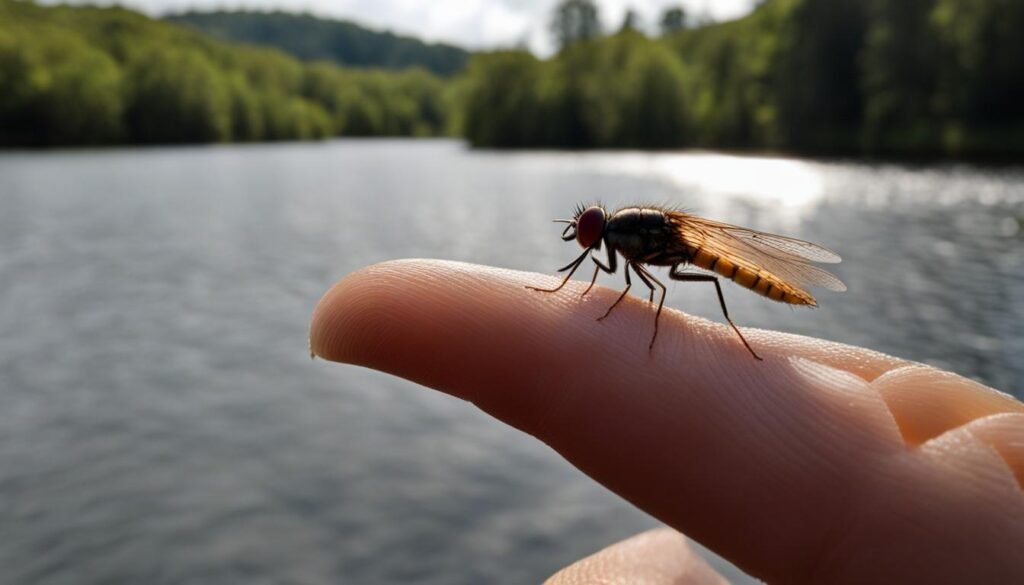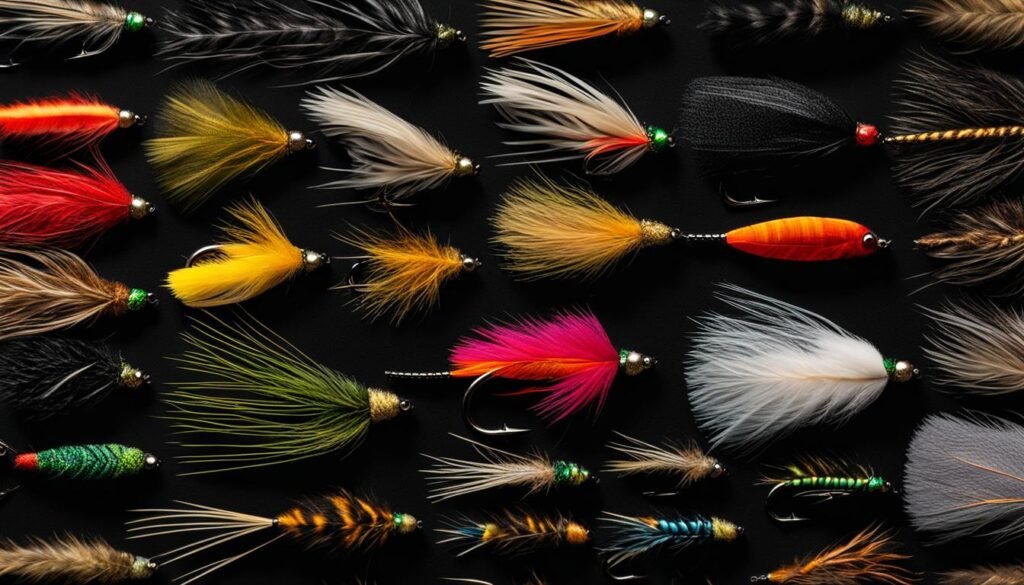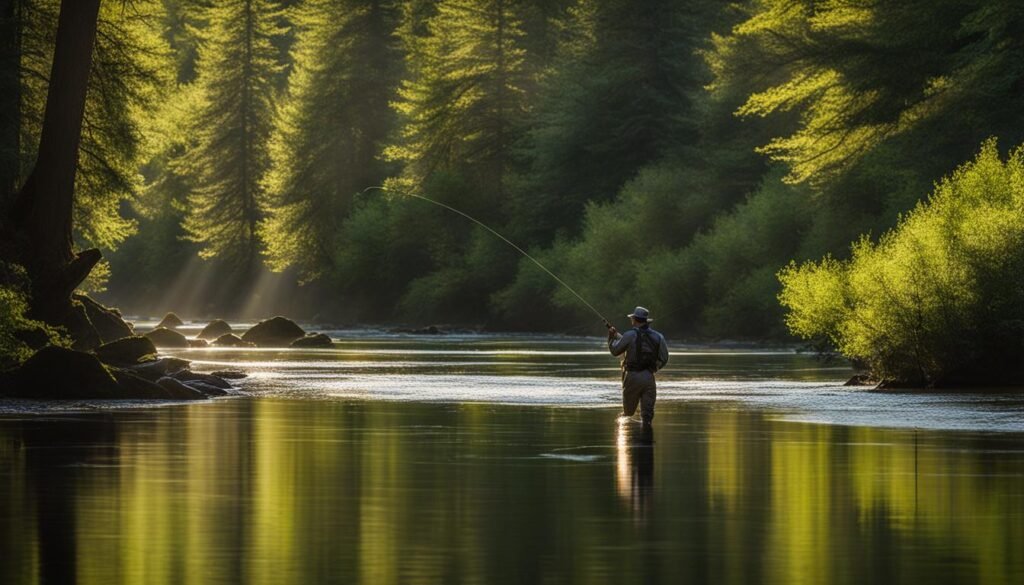Welcome to our comprehensive guide to fly fishing nymphs! If you’re looking to enhance your fly fishing skills, nymphing is a technique you won’t want to miss. Nymphs, which are artificial flies that imitate young aquatic insects, are highly effective in enticing trout to bite. In this article, we’ll provide you with all the essential information on fly fishing nymphs, including the best nymphs for fly fishing and the equipment you’ll need. So, let’s dive in and explore the fascinating world of nymph fishing!
DISCLAIMER: The links I mention may be affiliate links. If you purchase through one of these links I may receive a commission, at no cost to you. As an Amazon Associate I earn from qualifying purchases.
Why Nymphing is the Most Effective Method of Fly Fishing
Nymphing is considered the most effective method of fly fishing, and for good reason. It allows you to target trout when they are actively feeding on nymphs, which make up a significant part of their diet. Unlike dry fly fishing, where you have to wait for hatches or rising fish, nymphing can be done at any time of the year and in any type of water. This means you don’t have to rely on specific conditions or timing to have a successful day on the water.
Trout spend the majority of their time feeding underwater, especially on nymphs. Nymphs are the juvenile stage of insects like mayflies, caddisflies, and stoneflies, and trout find them highly attractive. By imitating these natural nymphs with your artificial flies, you can consistently fool trout into biting. This method allows you to present your fly at the depth where the fish are feeding, increasing your chances of getting a strike.
Whether you’re fishing in a fast-moving stream, a calm spring creek, or a stillwater lake, nymphing can be equally effective. It’s a versatile technique that can be adapted to any water body. By understanding the behavior of trout and the different nymphs present in the water, you can choose the right fly pattern and presentation to entice the fish to bite.
Advantages of Nymphing:
- Trout spend a significant amount of time feeding on nymphs, making nymphing a highly effective method.
- Nymphing can be done at any time of the year and in any type of water, maximizing your opportunities to catch fish.
- By imitating natural nymphs, you can consistently fool trout into biting.
- Nymphing is a versatile technique that can be adapted to different water bodies, allowing you to target fish in various fishing environments.
With nymphing, you have the advantage of targeting trout when they are most actively feeding, increasing your chances of success. So whether you’re a beginner or an experienced angler, give nymphing a try and discover the thrill of hooking into trout using this highly effective fly fishing method.
When and Where to Fish Nymphs?

When it comes to fly fishing nymphs, you have a wide range of options to choose from. The key is to understand the natural nymphs that trout feed on and select artificial flies that closely mimic them. Whether you’re fishing in swiftly-moving streams, sparkling spring creeks, or stillwater lakes, using the right nymphs can greatly increase your chances of success.
Top Nymphs for Fly Fishing
- Pheasant Tail: This versatile nymph imitates mayfly nymphs and is highly effective in a variety of water conditions.
- Hare’s Ear: Another popular choice, this nymph resembles various aquatic insects and works well in both fast and slow-moving water.
- Prince Nymph: Known for its flashy appearance, this nymph is great for attracting trout in deeper pools and runs.
- Copper John: With its weighted body and attractive colors, this nymph is perfect for fishing in faster currents.
- Zebra Midge: This small, simple nymph is a staple in any fly angler’s box and is effective in all types of water.
- San Juan Worm: A go-to pattern for stillwater fishing, this worm-like nymph entices trout with its lifelike movement.
- Pat’s Rubber Legs: Designed to resemble stonefly nymphs, this big and buggy fly is a favorite among anglers targeting larger trout.
Recommended Purchase: 133 Piece Nymph Flies Kit
Knowing the right time to fish nymphs is also crucial. While trout feed on nymphs throughout the year, there are certain times when they are more active. In general, nymphing is most productive during the morning and late afternoon when water temperatures are optimal. However, don’t be afraid to experiment and adjust your fishing times based on the specific conditions of the water body you’re fishing in.
To maximize your success, it’s important to locate areas where trout are present and focus your efforts there. Look for structure and cover such as rocks, logs, and underwater vegetation, as these are likely spots where trout seek food and shelter. Additionally, pay attention to the current and how it affects the movement of nymphs. Trout often position themselves in areas where they can easily intercept drifting nymphs, such as drop-offs, riffles, and eddies.
What Equipment Do You Need?

Rod and Reel
A 9-foot rod with a medium-to-fast action is ideal for nymph fishing. Look for a rod with a weight of 4, 5, or 6, as these are versatile options that can handle various nymphing techniques and conditions. As for the reel, a standard single-action reel will be perfectly suitable for nymph fishing.
Fly Line, Leader, and Tippet
When it comes to the fly line, choose a floating line that matches the weight of your rod. This will allow for better control and presentation of your nymphs. As for the leader, a 9-foot tapered nylon leader is the standard choice for nymph fishing. It provides a smooth transfer of energy between the fly line and the tippet, resulting in better accuracy and presentation. Make sure to have spools of tippet in various sizes, as different situations may require different tippet strengths.
Nymph Flies
Of course, you’ll need nymph flies to imitate the aquatic insects that trout feed on. There are several popular nymph patterns that have proven to be effective in various fishing situations. Some common nymph patterns include the pheasant tail, hare’s ear, prince nymph, copper john, zebra midge, San Juan worm, and Pat’s rubber legs. Having a selection of these nymph flies in different sizes and colors will give you options to match the natural insects in the water.
Techniques
When it comes to fly fishing nymphs, there are several techniques you can use to increase your chances of success. By experimenting with different techniques, you can adapt to the changing conditions of the day and improve your nymphing game. Here are a few popular techniques to consider:
Indicator Nymphing
Indicator nymphing is a technique that involves using a small bobber-like indicator to suspend the nymph below the surface of the water. This technique allows you to detect strikes more easily and ensures that your nymph is in the feeding zone. By adjusting the depth of the nymph and the position of the indicator, you can target specific areas where trout are likely to be feeding.
Tightlining
Tightlining is a more advanced nymphing technique that requires a sensitive touch. It involves holding the rod high and maintaining a tight line connection with the nymph. By closely monitoring the tension in your line and feeling for subtle strikes, you can detect even the most delicate bites. Tightlining is particularly effective in fast-moving streams where you need precise control over your presentation.
Swinging
Swinging is a classic nymphing technique that mimics the natural movement of nymphs in the water. To swing a nymph, cast your line across a current and let it drift downstream. As the line tightens, it creates a swinging motion that can entice trout to strike. Swinging works best in rivers and streams with moderate current speeds. Experiment with different retrieves and swing speeds to find what works best.
Stripping
In stillwater environments such as lakes or ponds, stripping is a commonly used nymphing technique. It involves retrieving the nymphs with quick, short strips to imitate the movement of swimming insects. Vary your retrieval speed and rhythm to find the most enticing presentation. Keep an eye out for subtle takes, as trout may strike when you least expect it.

